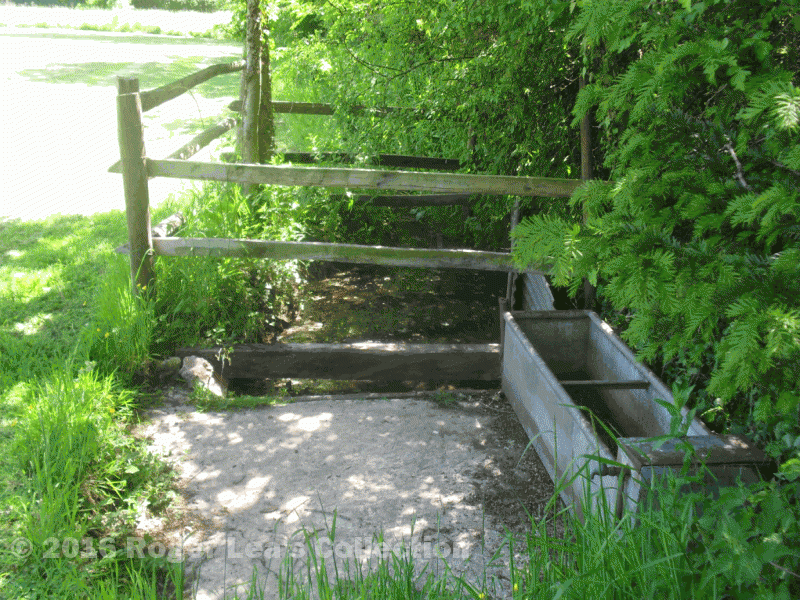New Hall Mill in Wylde Green Road, Sutton’s only surviving watermill, is run by the volunteer group “The Friends of New Hall Mill”. As well as maintaining and working the historic mill, the Friends look after the Miller’s garden, the Mill Meadow, and the Car Park Field. It was while trying to improve a waterlogged part of the car park field that a drinking station for cattle was uncovered.
The old name for the car park field was Rickyard Meadow, one of the fields belonging to New Shipton Farm. Livestock must have free access to plenty of clean, fresh water to be productive, and the spring-fed watering hole would have supplied this need for the horses and cattle grazing in the meadow. In the 1850s New Shipton was a mixed farm - arable and pasture- of sixteen fields totalling 120 acres; however, when it was first created it consisted of four large fields of forty acres each.
A thousand years ago King Henry I was Lord of the Manor of Sutton, where he owned an extensive area of woodland extending from Reddicap Hill to Pype Hayes, a valuable asset. By 1300 the woodland was less productive; the Earl of Warwick was then the manorial lord, and he drastically altered his domain, moving his residence from the Manor House on Manor Hill to a new hall in the former woodland. The old manor house had a vaccarium (dairy farm) nearby, and this was also relocated and given its English name, New Shippen
The car park field formed part of a forty-acre field called Old Redding, a name meaning old clearing, so it may have been the first to be reclaimed from the woodland. Way back in 1300, or even earlier, we can envisage the Earl of Warwick’s cattle drinking at the watering hole.
Not all farms had a ready water source for their animals, but needed access to public springs or ponds - the Sutton Court Leet in 1578 ordered that “John Cowper should permit his neighbours to have a good driveway in the usual place to the field called Walle filde and to the pit called the Waterynge place”, and in 1556 there was an order that a dam be repaired so that “the neighbours may have water therein for their cattle”.
A drinking place such as the one in the car park field could easily be fouled, and the surrounding land turned into a morass, so it was fenced round with a hard standing on the open side so that the animals would drink without fouling the water - this would have been a gravel platform, later concreted over - have a look at it next time you are at the Mill (next Open Day Sunday July 12th.)
